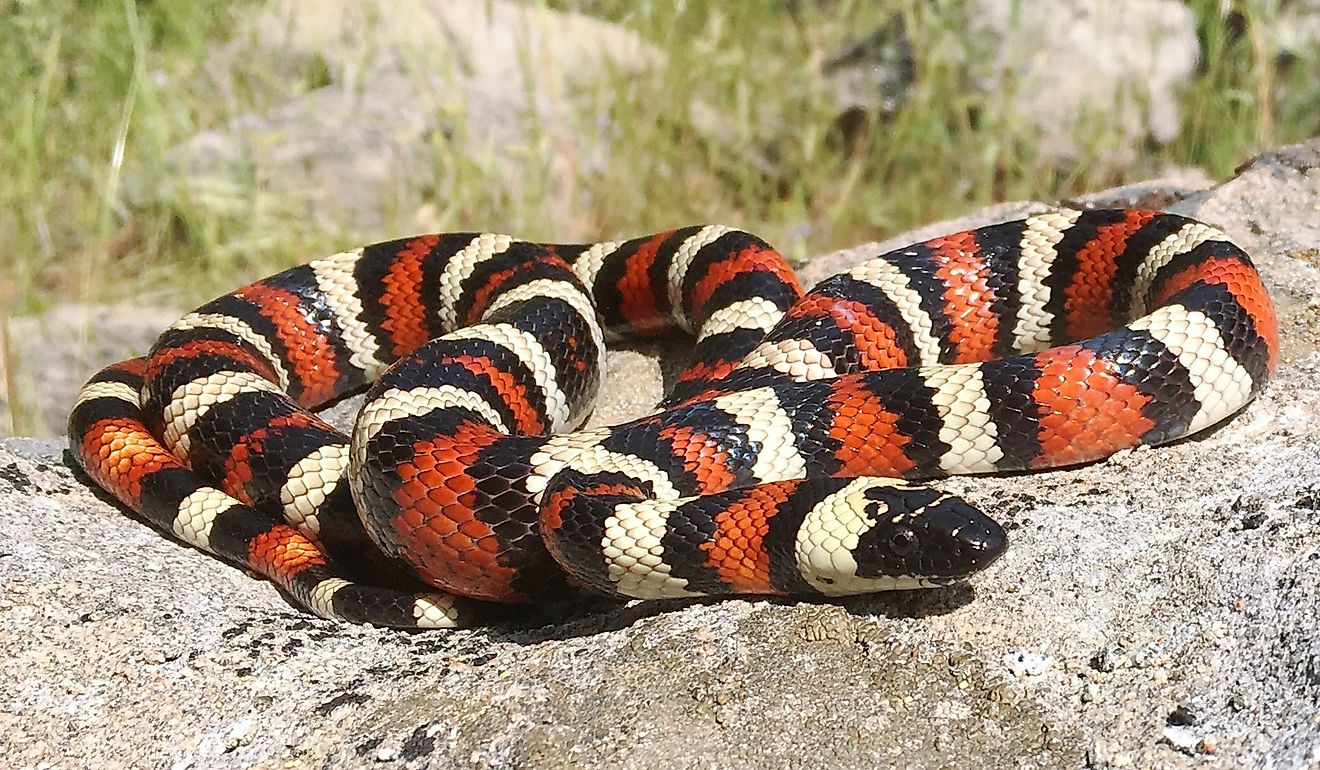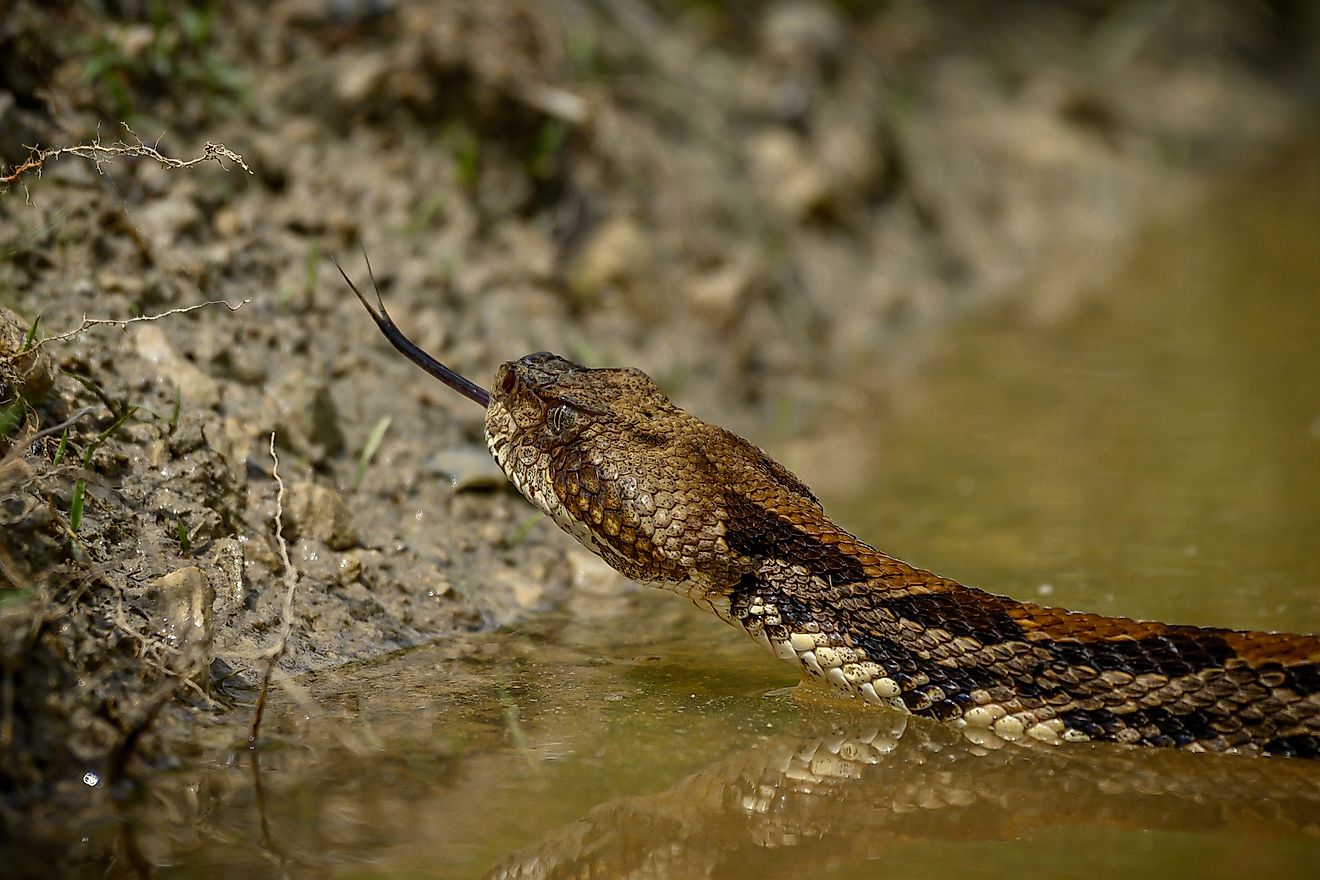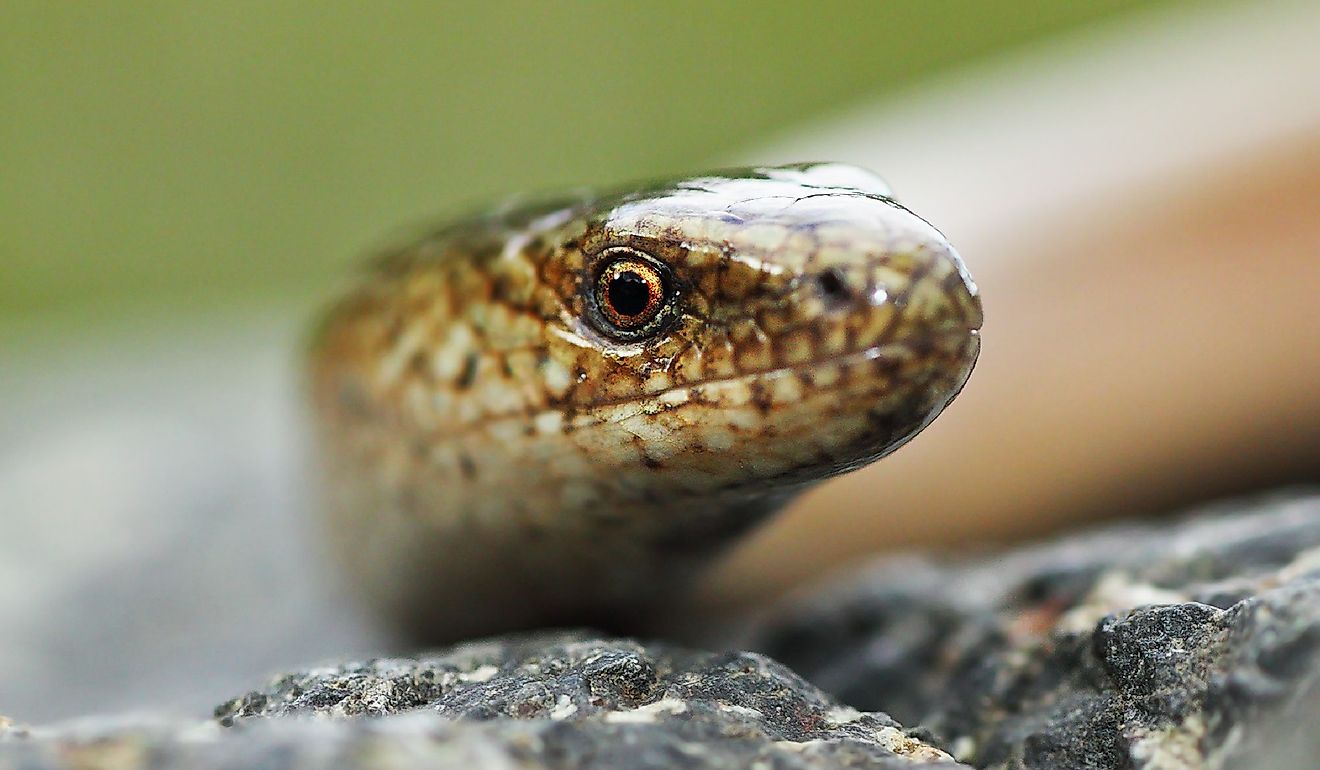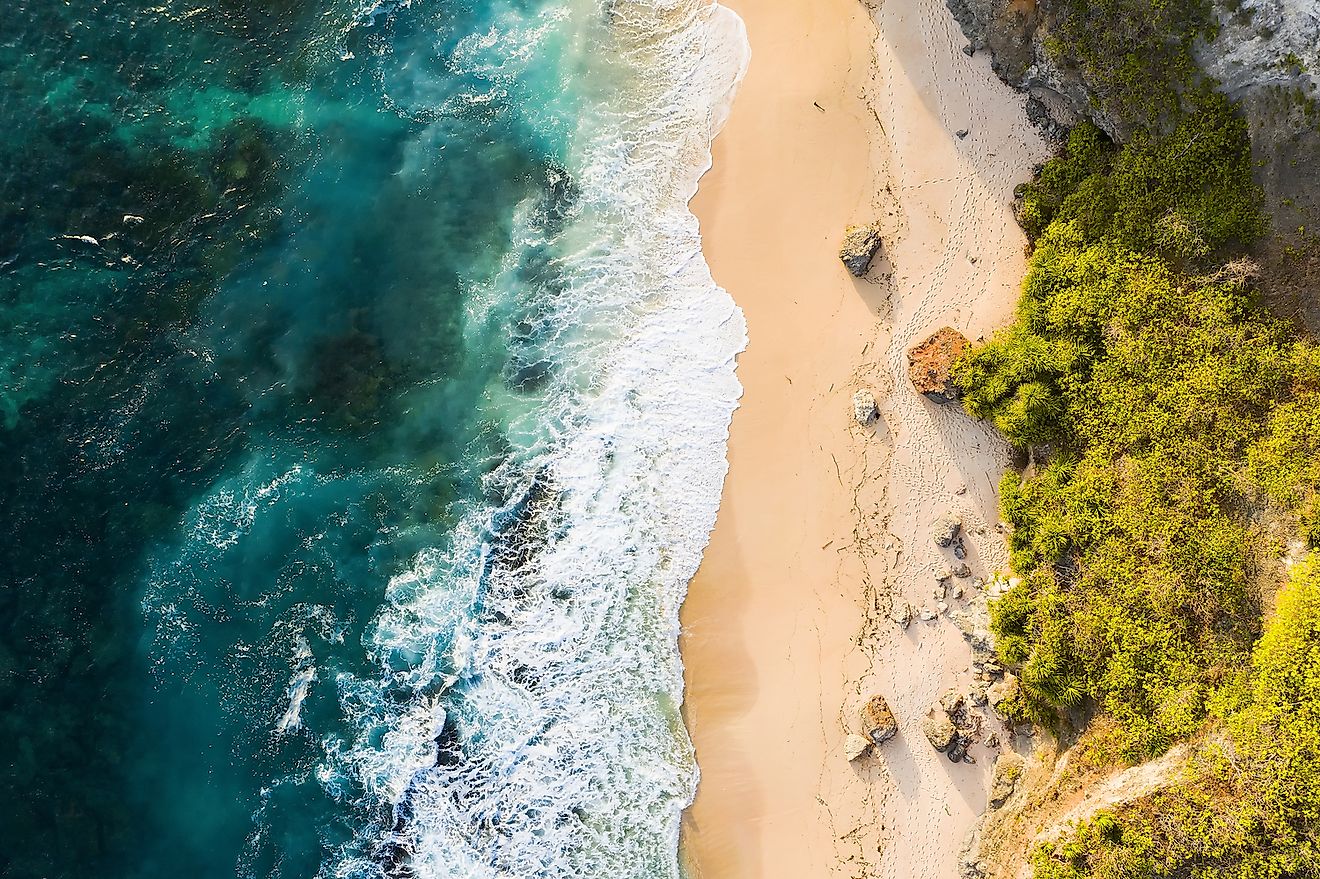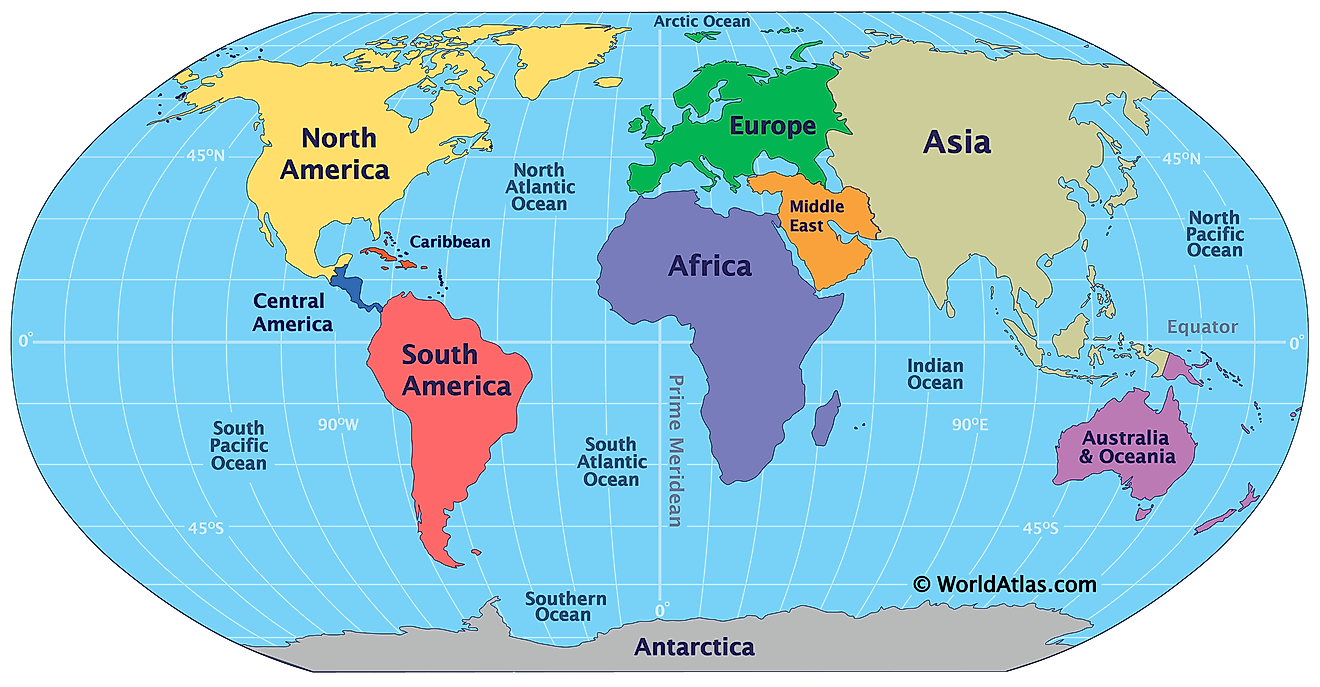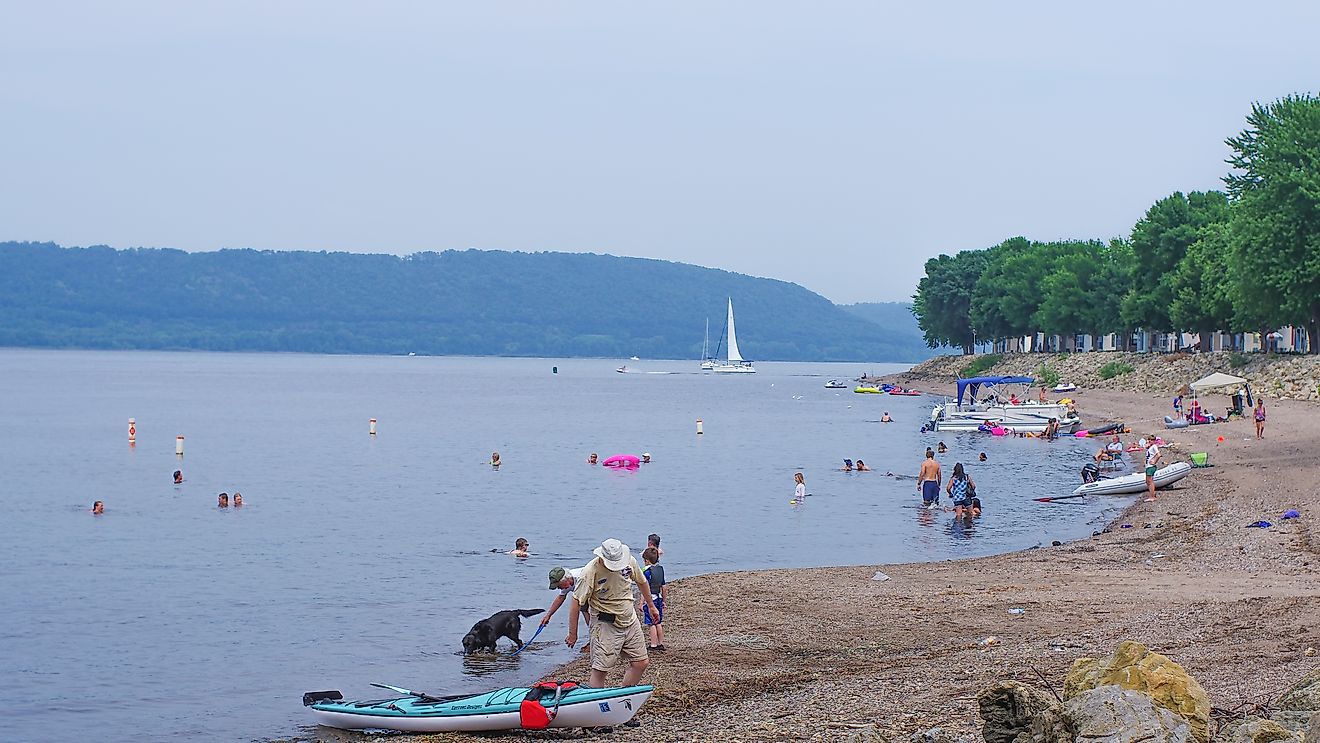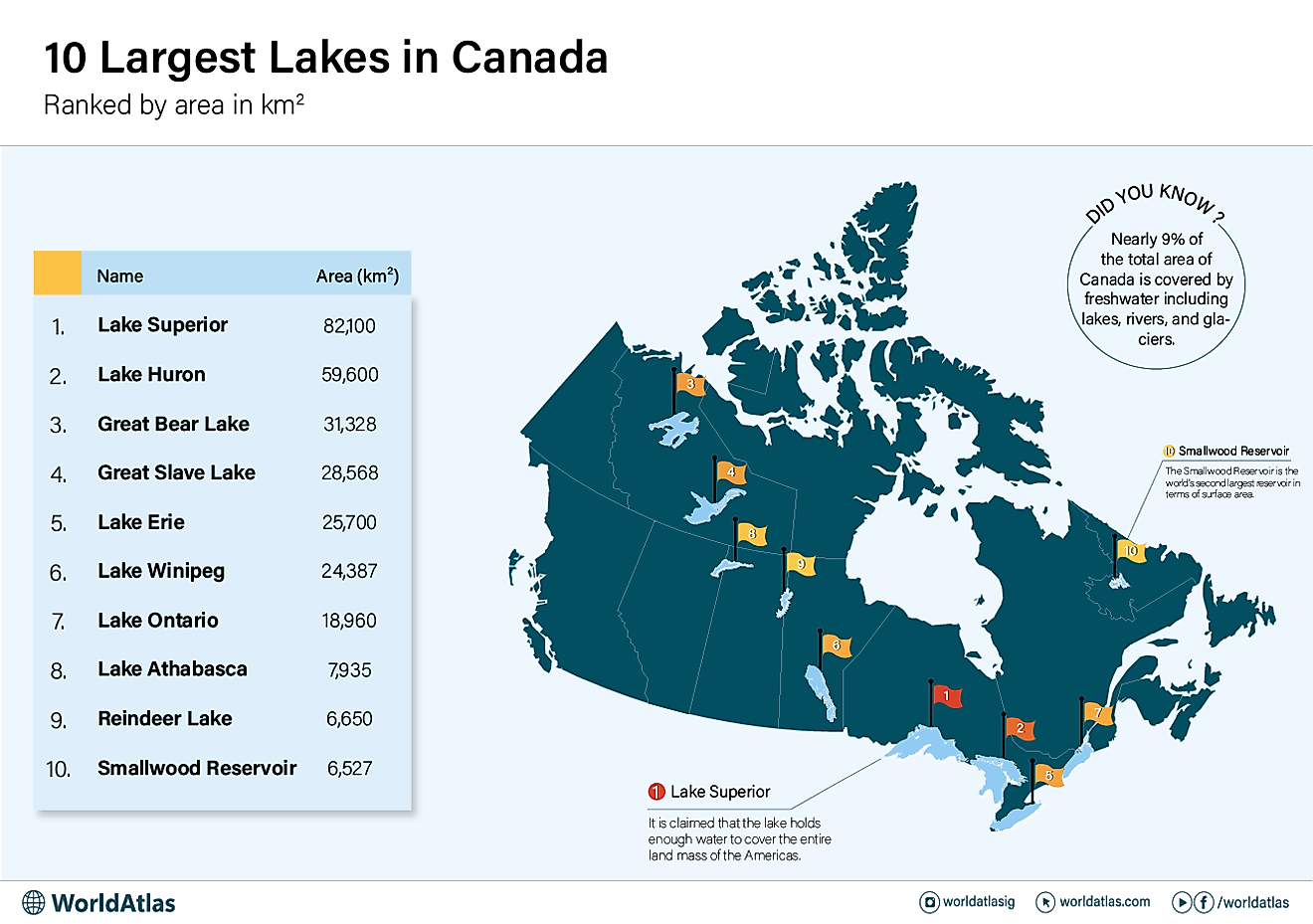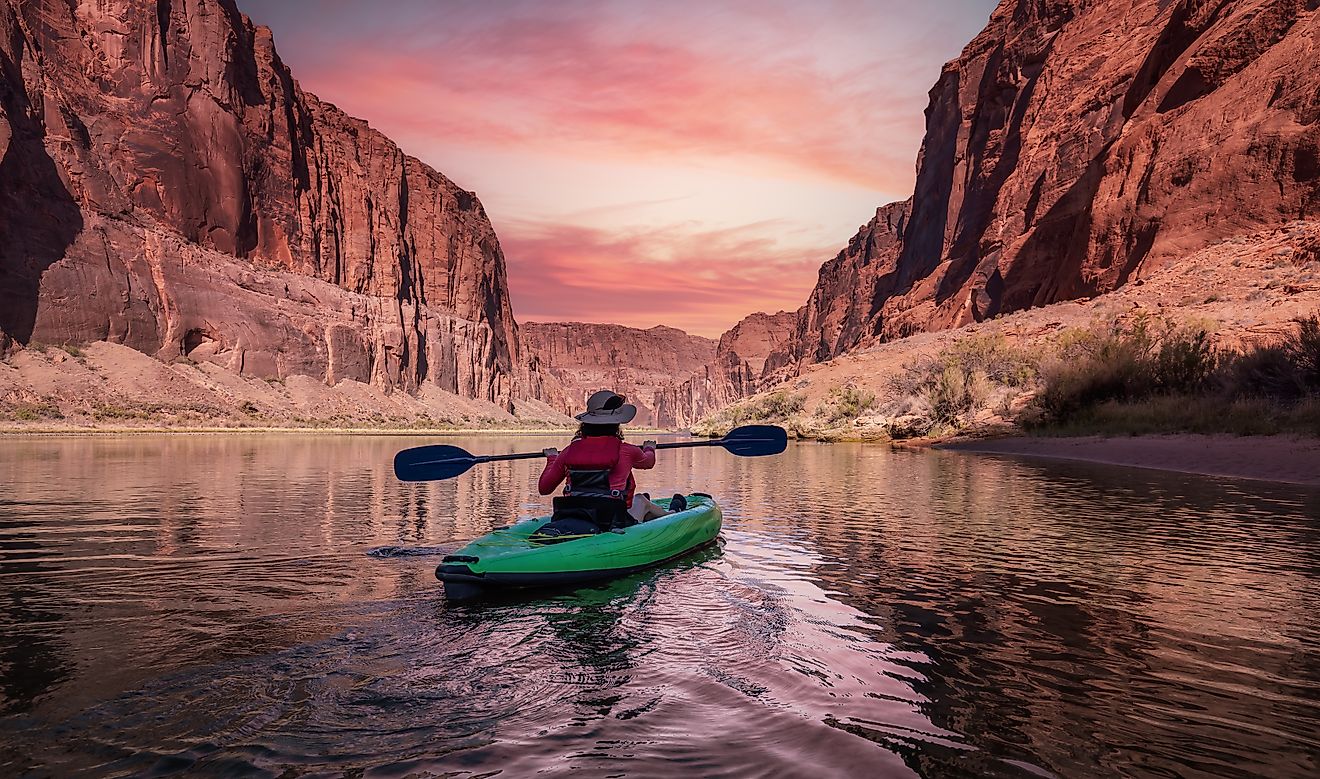
6 Most Snake-Filled Bodies Of Water In West Virginia
The rugged landscape of West Virginia attracts millions of visitors annually, many of them outdoor enthusiasts who love activities like fishing, whitewater rafting, kayaking, and just soaking in the beauty of the state’s stunning rivers, lakes, and other bodies of water. From the winding New River Gorge to the serene Shenandoah River, there’s no shortage of spots for fun in the water. There’s nothing quite like the challenging Potomac River for paddlers, while anglers can enjoy casting a line in the Greenbrier River. Summersville Lake offers endless opportunities for everything from swimming to pontoon rentals to jet skis and stand-up paddleboarding.
While enjoying these activities, remember that these waterways are home to snakes. Spotting a non-venomous northern water snake basking on a rock or swimming nearby is all part of the experience for nature lovers. So head outdoors and enjoy the six most snake-filled bodies of water, where sharing space with these fascinating reptiles is all part of the adventure.
New River
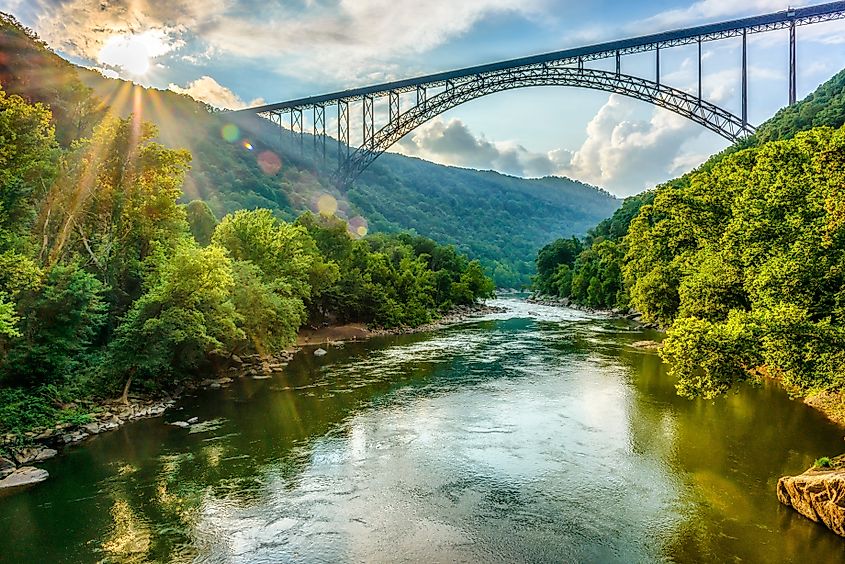
One of the oldest rivers in North America, the New River ranks as one of the most snake-infested rivers in the Mountain State, thanks to its over 300 miles in length. The 70,000-acre New River Gorge National Park and Preserve encompasses 53 miles of the free-flowing New River, beginning at Bluestone Dam and ending at Hawks Nest Lake. It is a top whitewater rafting destination, with easy rapids for novice paddlers, located in the upper part of the river. In contrast, the lower part of the river, known as “the Lower Gorge,” has some of the most challenging rapids requiring skilled maneuvers around hazardous rocks.

Near the shoreline and surrounding brush, paddlers may encounter about a dozen different snakes, including the eastern garter snake and the common garter snake. Northern, queen, and common water snakes can occasionally be seen in the river. Two species of special concern in the park are the eastern worm snake and the rough green snake. Hikers should be vigilant on the trails as the New River Gorge National Park and Preserve is one of the most rattlesnake-infested areas in West Virginia, home to the timber rattlesnake.
Shenandoah River
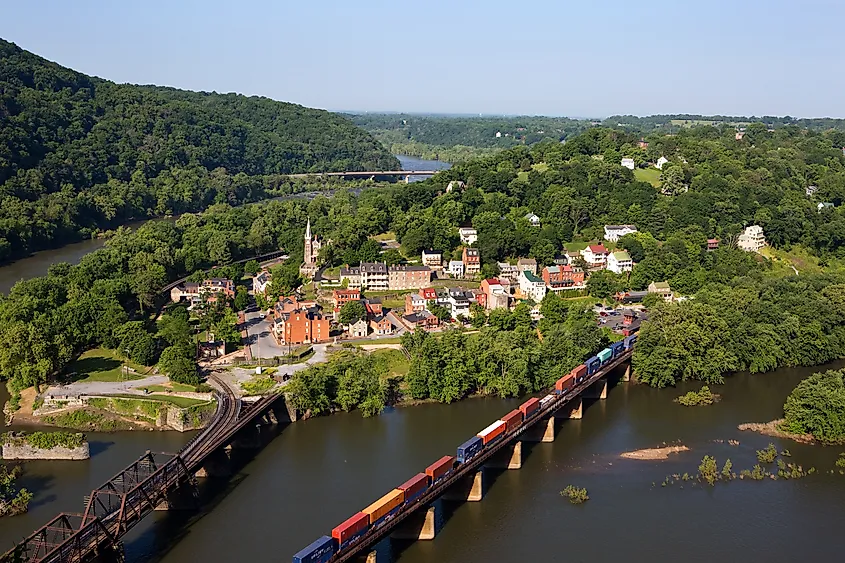
The Shenandoah River flows for 57 miles until it converges with the historic Potomac River at “The Point,” a landmark in the town of Harpers Ferry, which is the perfect spot to organize a day trip tubing down the mellow, lazy river along the foot of the Blue Ridge Mountains. River & Trail Outfitters has all the required gear to get tubers out on the water quickly, where paddlers may encounter the highly aquatic queen snake, which is almost always found near flowing water. Eastern garter snakes can be spotted along the shoreline, too.
The venomous timber rattlesnakes and northern copperheads can be found In Harpers Ferry National Historical Park away from the Shenandoah River, typically in rocky outcroppings, forested areas, and other secluded habitats. In 2022, one of the foremost snake researchers and counter of timber rattlesnake populations, William “Marty” Martin, died after being bitten by a captive timber rattler he’d kept on his property.
Summersville Lake

Summersville Lake is the largest lake in the Mountain State, at 2,700 acres and 60 miles of shoreline. Northern water snakes are commonly spotted basking on rocks near the lake. Fully grown, these snakes are between 2 and 4.5 feet long and are often mistaken for northern copperheads or eastern cottonmouths, but they are not venomous. They are the most defensive snakes in the state, and if agitated, they may flatten their bodies and bite. A bite from a non-venomous snake isn’t dangerous, though it may hurt. For first aid, clean the bite with soap and antiseptic.
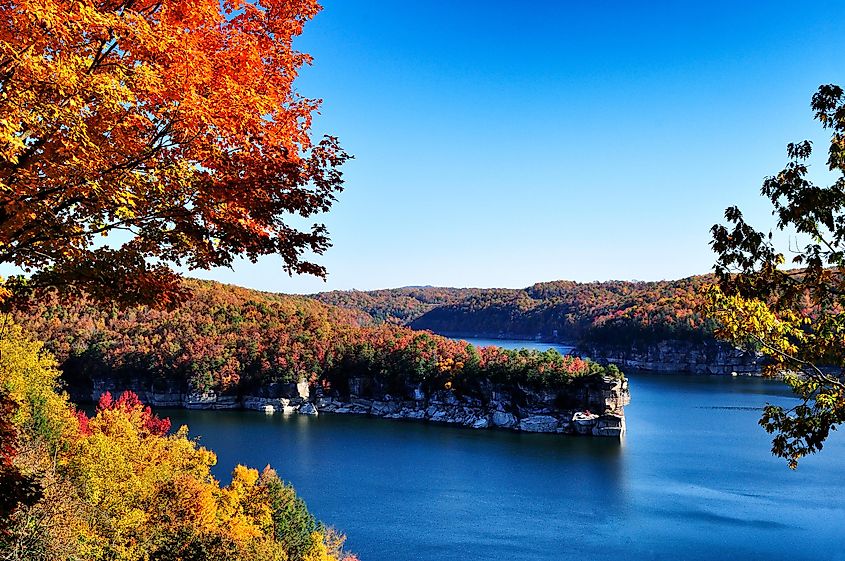
The recreational lake, sometimes called the “Little Bahamas of the East,” has a reputation for having the clearest Caribbean blue waters on the east coast of the U.S. Summersville Lake State Park makes the perfect base camp for enjoying the lake with plenty of opportunities for activities like swimming, scuba diving, and snorkeling. There are several outfitters at the lake, like Lakeside Outfitters, where paddlers can rent kayaks, stand-up paddleboards or book a paddling lesson.
Greenbrier River
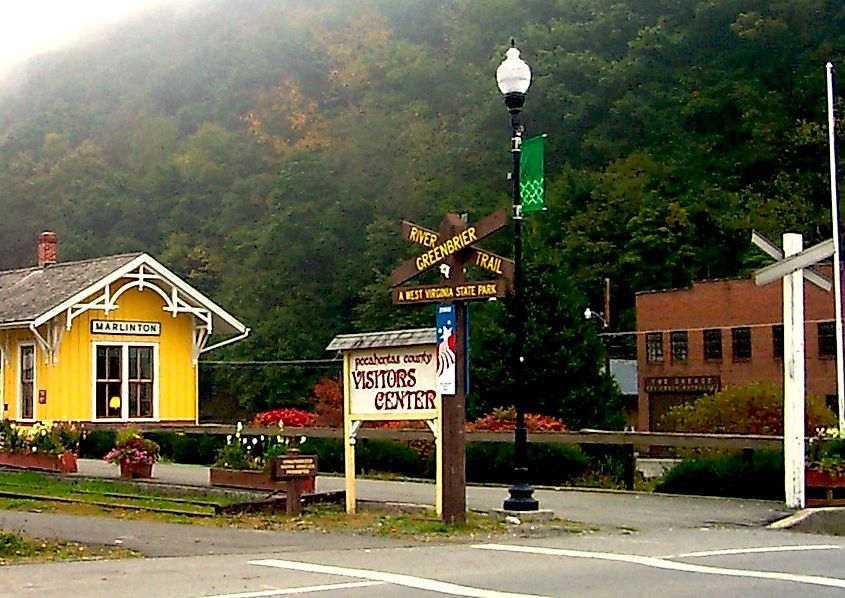
The Greenbrier River is a 173-mile tributary of the New River with numerous access points where outdoor enthusiasts can get out on the water to paddle and fish for smallmouth bass, channel catfish, trout, and muskie. Several local outfitters, like WV Outdoor Adventures, offer guided smallmouth bass fishing trips with shuttle service to the river. Anglers can also make a trip from any of the multiple access points on the Greenbrier River Trail. The former railway-turned-trailway follows 78 miles of the longest free-flowing river in West Virginia. Companies like Free Spirit Adventures and Greenbrier Outfitters offer bike rentals and shuttle services so active visitors not interested in fishing can explore the trail by bike.
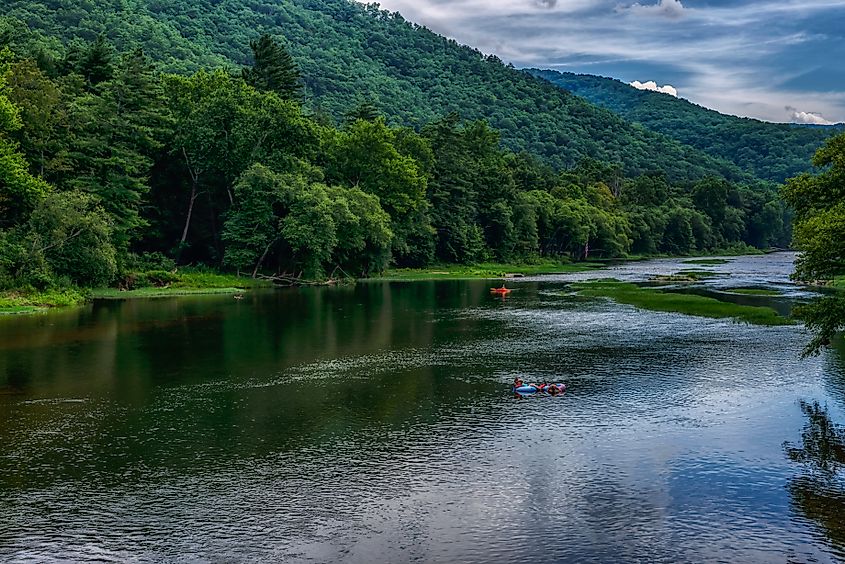
Visitors along the trail report seeing black rat snakes, coral snakes, garter snakes, and the occasional timber rattlesnake. Nearby attractions include the Cass Scenic Railroad State Park, where train spotters can hop aboard a vintage locomotive and tour an authentic logging town, complete with a company store, gift shop, restaurant, and soda fountain.
Ohio River
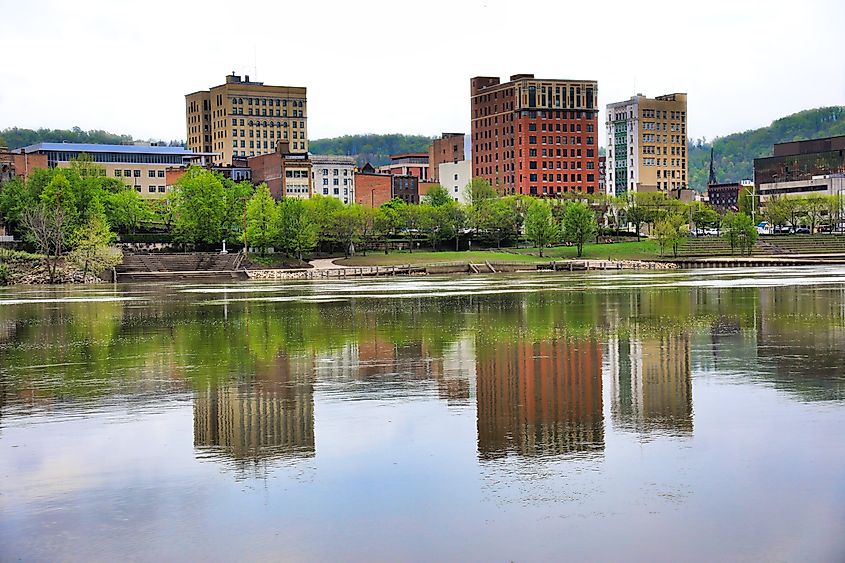
The 981-mile Ohio River flows through six U.S. states, including Pennsylvania, Ohio, Kentucky, Indiana, Illinois, and West Virginia. Several small towns in West Virginia border the Ohio River, like Huntington, Henderson, and Parkersburg, which is the ideal launching pad for a day trip to the Blennerhassett Island Historical State Park. The park is accessed via a sternwheeler riverboat, where visitors can tour the colonial mansion and take a horse-drawn carriage tour of this unusual island on the Ohio River.
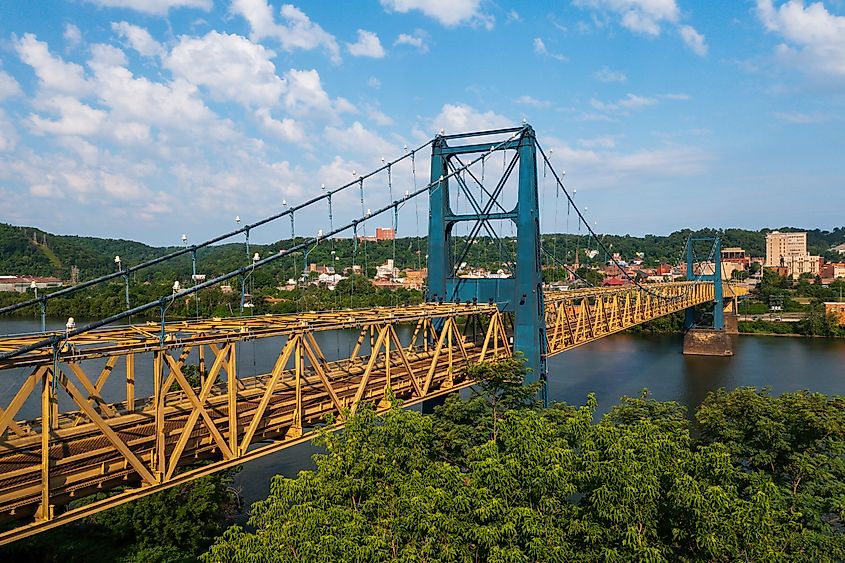
Several non-venomous water snakes make their home in the river, including the ribbon snake, the copper-bellied water snake, the queen snake, the Ohio Valley water snake, the eastern fox snake, and the northern water snake. The northern water snake is often confused with the venomous cottonmouth (also known as the water moccasin) because of its color and pattern variations. Cottonmouth snakes, or any venomous water snakes, do not live in West Virginia.
South Branch Potomac River
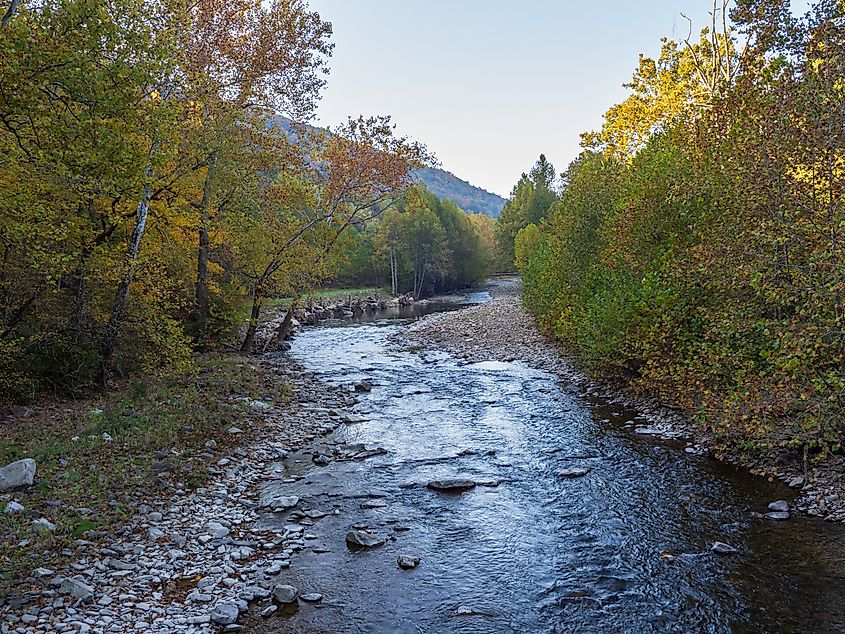
The South Branch Potomac River is a popular destination for fishing, swimming, and boating, as much of the river flows through recreation areas like the Monongahela National Forest, one of West Virginia’s 7 Best Natural Wonders. Outfitters offer a variety of trips on the scenic river, from two-hour rainbow trout fishing excursions to overnight float trips through the Smoke Hole Canyon, a 20-mile gorge carved by the South Branch Potomac River in the Allegheny Mountains.
It is home to an uncommon non-venomous snake species in the Mountain State, the Eastern Kingsnake. Identified by its striking black-and-white or yellow-banded pattern, the snakes can be found in forests, grasslands, and near water sources. Kingsnakes are named for their habit of eating other snakes, including venomous ones like northern copperheads.
West Virginia is an excellent place for outdoor adventures, offering stunning rivers and lakes. The Mountain State is home to 23 species of snakes, so snake sighting opportunities abound. Happily, only two species are venomous, the timber rattlesnake and the northern copperhead. Outdoor enthusiasts planning a watery adventure in West Virginia can safely enjoy whitewater rafting on the New River, tubing on the Shenandoah, swimming in the clear blue waters of Summersville Lake, or spending time at any of these six most snake-filled bodies of water.


